Jesse Ables
Eclectic Rule Extraction for Explainability of Deep Neural Network based Intrusion Detection Systems
Jan 18, 2024



Abstract:This paper addresses trust issues created from the ubiquity of black box algorithms and surrogate explainers in Explainable Intrusion Detection Systems (X-IDS). While Explainable Artificial Intelligence (XAI) aims to enhance transparency, black box surrogate explainers, such as Local Interpretable Model-Agnostic Explanation (LIME) and SHapley Additive exPlanation (SHAP), are difficult to trust. The black box nature of these surrogate explainers makes the process behind explanation generation opaque and difficult to understand. To avoid this problem, one can use transparent white box algorithms such as Rule Extraction (RE). There are three types of RE algorithms: pedagogical, decompositional, and eclectic. Pedagogical methods offer fast but untrustworthy white-box explanations, while decompositional RE provides trustworthy explanations with poor scalability. This work explores eclectic rule extraction, which strikes a balance between scalability and trustworthiness. By combining techniques from pedagogical and decompositional approaches, eclectic rule extraction leverages the advantages of both, while mitigating some of their drawbacks. The proposed Hybrid X-IDS architecture features eclectic RE as a white box surrogate explainer for black box Deep Neural Networks (DNN). The presented eclectic RE algorithm extracts human-readable rules from hidden layers, facilitating explainable and trustworthy rulesets. Evaluations on UNSW-NB15 and CIC-IDS-2017 datasets demonstrate the algorithm's ability to generate rulesets with 99.9% accuracy, mimicking DNN outputs. The contributions of this work include the hybrid X-IDS architecture, the eclectic rule extraction algorithm applicable to intrusion detection datasets, and a thorough analysis of performance and explainability, demonstrating the trade-offs involved in rule extraction speed and accuracy.
Explainable Intrusion Detection Systems Using Competitive Learning Techniques
Mar 30, 2023
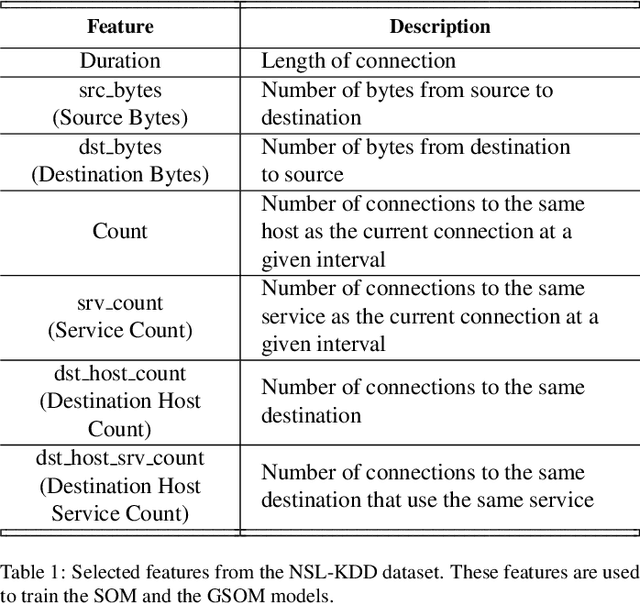

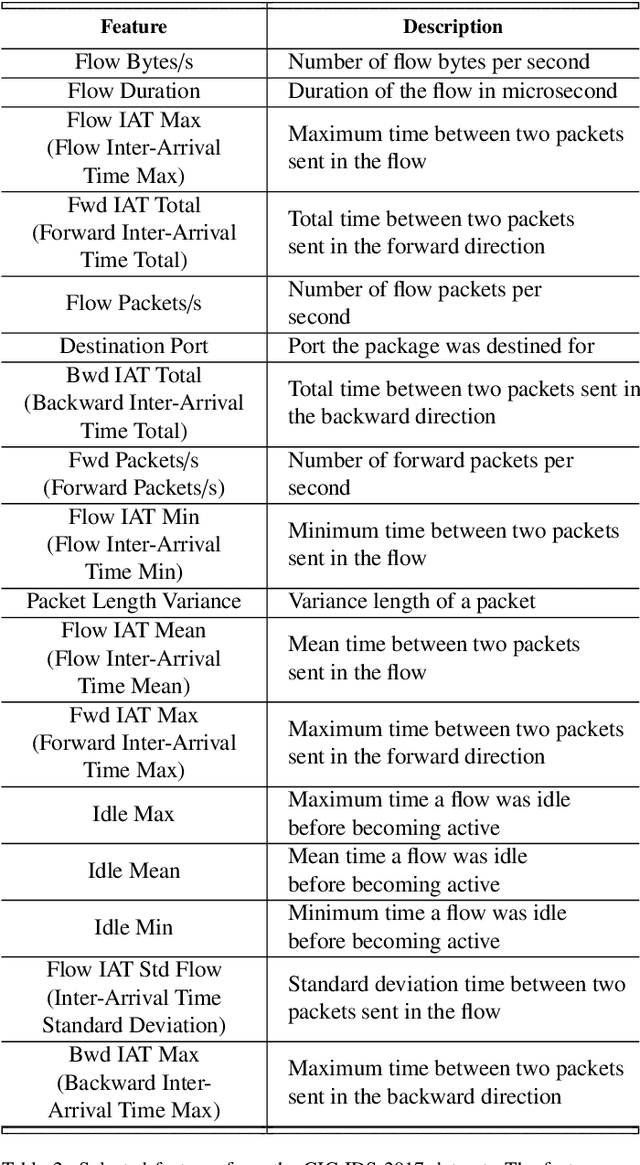
Abstract:The current state of the art systems in Artificial Intelligence (AI) enabled intrusion detection use a variety of black box methods. These black box methods are generally trained using Error Based Learning (EBL) techniques with a focus on creating accurate models. These models have high performative costs and are not easily explainable. A white box Competitive Learning (CL) based eXplainable Intrusion Detection System (X-IDS) offers a potential solution to these problem. CL models utilize an entirely different learning paradigm than EBL approaches. This different learning process makes the CL family of algorithms innately explainable and less resource intensive. In this paper, we create an X-IDS architecture that is based on DARPA's recommendation for explainable systems. In our architecture we leverage CL algorithms like, Self Organizing Maps (SOM), Growing Self Organizing Maps (GSOM), and Growing Hierarchical Self Organizing Map (GHSOM). The resulting models can be data-mined to create statistical and visual explanations. Our architecture is tested using NSL-KDD and CIC-IDS-2017 benchmark datasets, and produces accuracies that are 1% - 3% less than EBL models. However, CL models are much more explainable than EBL models. Additionally, we use a pruning process that is able to significantly reduce the size of these CL based models. By pruning our models, we are able to increase prediction speeds. Lastly, we analyze the statistical and visual explanations generated by our architecture, and we give a strategy that users could use to help navigate the set of explanations. These explanations will help users build trust with an Intrusion Detection System (IDS), and allow users to discover ways to increase the IDS's potency.
Designing an Artificial Immune System inspired Intrusion Detection System
Aug 16, 2022
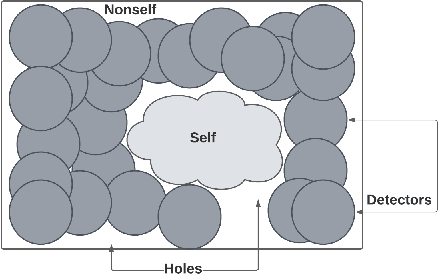
Abstract:The Human Immune System (HIS) works to protect a body from infection, illness, and disease. This system can inspire cybersecurity professionals to design an Artificial Immune System (AIS) based Intrusion Detection System (IDS). These biologically inspired algorithms using Self/Nonself and Danger Theory can directly augmentIDS designs and implementations. In this paper, we include an examination into the elements of design necessary for building an AIS-IDS framework and present an architecture to create such systems.
Creating an Explainable Intrusion Detection System Using Self Organizing Maps
Jul 15, 2022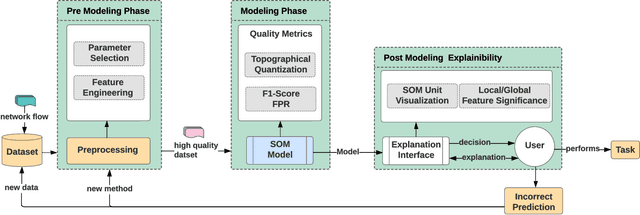
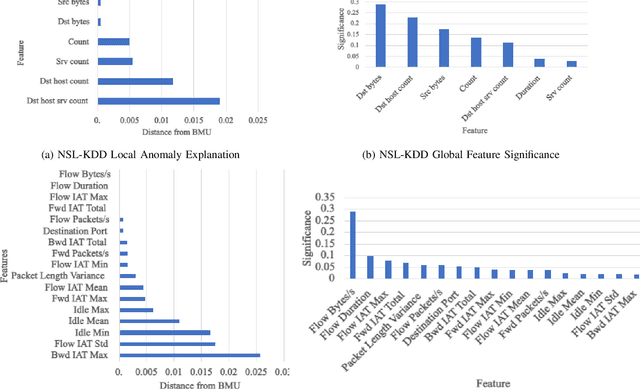
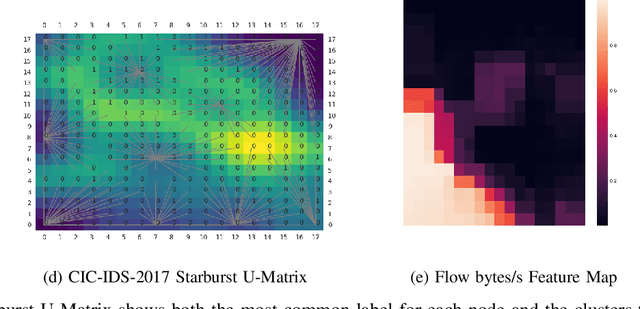

Abstract:Modern Artificial Intelligence (AI) enabled Intrusion Detection Systems (IDS) are complex black boxes. This means that a security analyst will have little to no explanation or clarification on why an IDS model made a particular prediction. A potential solution to this problem is to research and develop Explainable Intrusion Detection Systems (X-IDS) based on current capabilities in Explainable Artificial Intelligence (XAI). In this paper, we create a Self Organizing Maps (SOMs) based X-IDS system that is capable of producing explanatory visualizations. We leverage SOM's explainability to create both global and local explanations. An analyst can use global explanations to get a general idea of how a particular IDS model computes predictions. Local explanations are generated for individual datapoints to explain why a certain prediction value was computed. Furthermore, our SOM based X-IDS was evaluated on both explanation generation and traditional accuracy tests using the NSL-KDD and the CIC-IDS-2017 datasets.
Explainable Intrusion Detection Systems (X-IDS): A Survey of Current Methods, Challenges, and Opportunities
Jul 13, 2022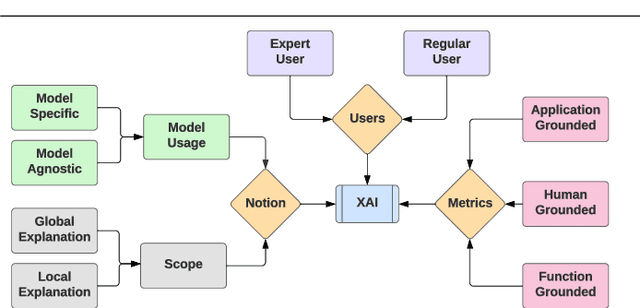
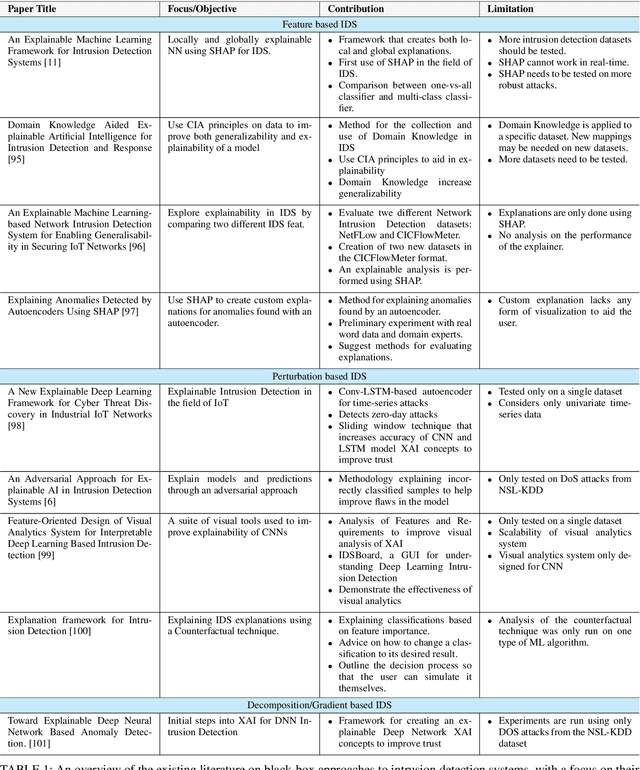
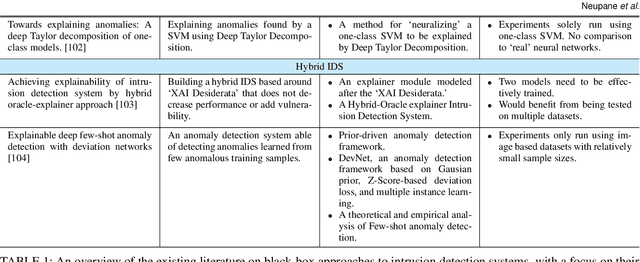

Abstract:The application of Artificial Intelligence (AI) and Machine Learning (ML) to cybersecurity challenges has gained traction in industry and academia, partially as a result of widespread malware attacks on critical systems such as cloud infrastructures and government institutions. Intrusion Detection Systems (IDS), using some forms of AI, have received widespread adoption due to their ability to handle vast amounts of data with a high prediction accuracy. These systems are hosted in the organizational Cyber Security Operation Center (CSoC) as a defense tool to monitor and detect malicious network flow that would otherwise impact the Confidentiality, Integrity, and Availability (CIA). CSoC analysts rely on these systems to make decisions about the detected threats. However, IDSs designed using Deep Learning (DL) techniques are often treated as black box models and do not provide a justification for their predictions. This creates a barrier for CSoC analysts, as they are unable to improve their decisions based on the model's predictions. One solution to this problem is to design explainable IDS (X-IDS). This survey reviews the state-of-the-art in explainable AI (XAI) for IDS, its current challenges, and discusses how these challenges span to the design of an X-IDS. In particular, we discuss black box and white box approaches comprehensively. We also present the tradeoff between these approaches in terms of their performance and ability to produce explanations. Furthermore, we propose a generic architecture that considers human-in-the-loop which can be used as a guideline when designing an X-IDS. Research recommendations are given from three critical viewpoints: the need to define explainability for IDS, the need to create explanations tailored to various stakeholders, and the need to design metrics to evaluate explanations.
 Add to Chrome
Add to Chrome Add to Firefox
Add to Firefox Add to Edge
Add to Edge